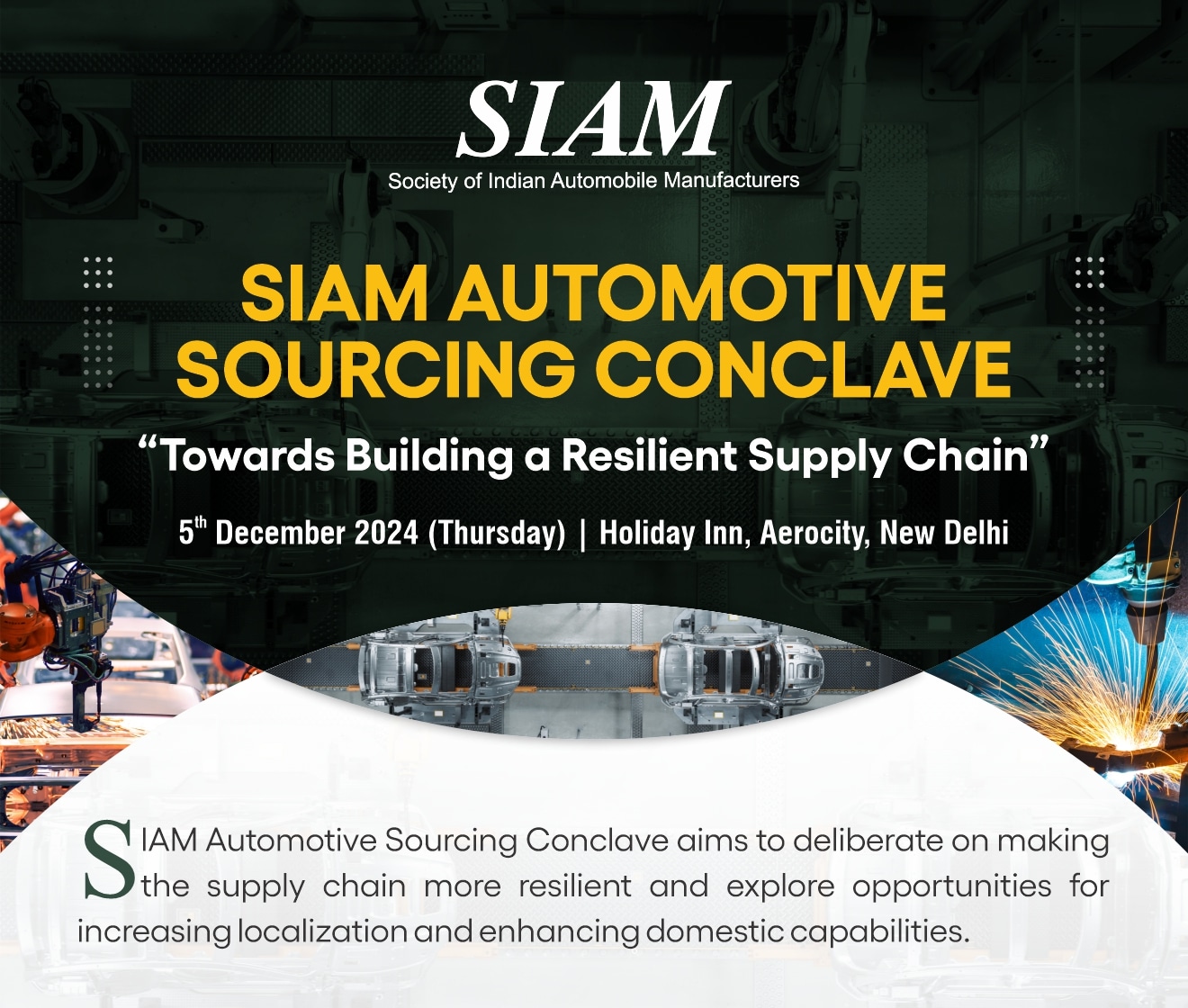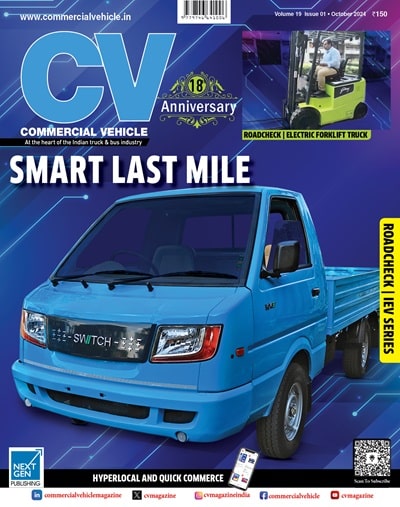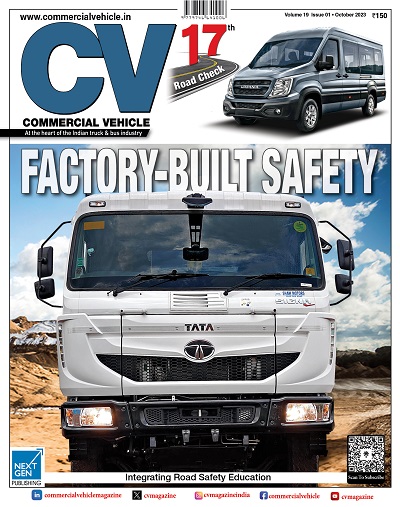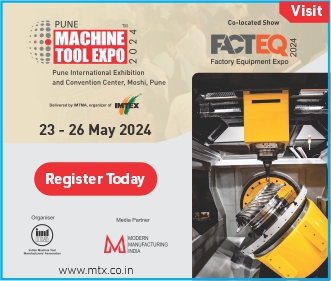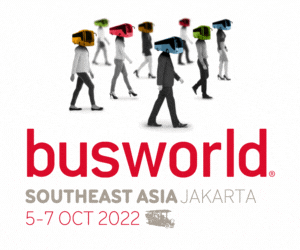Q & A : Ravi Pisharody, Executive Director — Commercial Vehicles, Tata Motors
Interview by : Bhushan Mhapralkar
Q. What growth will the CV industry achieve?
A. We are seeing more of what we saw last year. M&HCV sales continue to grow at 20-25 per cent, driven by cargo. Cargo M&HCVs are growing at 30 per cent on replacement demand. Tipper and construction truck part, which accounts for 30 per cent, is flat. Not like 2010-11, which saw the last big purchase. Replacement demand is connected with resale value. Demand is also coming from clients that are asking operators to buy new trucks, which are efficient and have a faster turnaround time. On October 01, 2015, some regions will move to BS IV emission norms. ABS and speed limiter will be implemented from October 01 as well. Some pre-buying to offset three to four per cent price hike is expected. We however want IIP (Industrial GDP) and mining recovery to come in. Also, agriculture. The base effect is kicking in. Buses (4 to 11-tonne) performed better in the first quarter. Small pick-ups have seen no major impact. It is essential to look at each segment. M&HCVs are growing at 20 to 25 per cent and Small Commercial Vehicles (SCVs) are declining. Companies with a complete range hold the chance of looking adverse in the short-term.
Q. What impact would regulations have on growth?
A. Regulations are a part, and also the return of some of the growth drivers like the move up to higher tonnage vehicles, tractor-trailers, etc. Today, tractor trailers are the fastest growing; two-axle trucks are the least growing. Customers want to invest in new segments. The 49-tonne segment for example. Introduced six years ago, this segment almost vanished during recession. It is coming back. Also, the move to higher hp. We led the movement from 150 hp to 180 hp in 2010-11. We are seeing a move up to 230 hp trucks from 200 hp. Even multi-axle designs due to more open competition. All the big names are here. It is obvious that people would like to differentiate. A movement towards higher spec products is on therefore. Regulations like ABS and speed limiters will help.
Q. What about alternate fuel technologies?
A. Government is trying to get some sort of electric play, and we want to be at the fore-front of it. In the area of hybrid buses mainly. The biggest area for electric play is the city hybrid bus. We are piloting a vehicle for almost four years now. We are trying to talk to the government and frame the FAME programme; to make it commercially viable. A BMTC order is part of that programme. We qualified for a hybrid tender BMTC floated. The price of the product is making it a bit of an issue. A strong push is necessary for alternative fuel technology or hybrid. We were expecting a larger outlay by the government in the budget. We expect it to come.
Q. So, buses are seeing a technological leap?
A. We are working towards executing an order for articulated buses for Hubli-Dharwad by December. There was no articulated bus purchase for many years. Higher unit price is difficult to afford. Technology is slowly moving up. For JNNURM recognition, many bus body builders are becoming bigger, professional and more efficient. With Bus body code fully implemented on August 01, 2015, ‘Mickey Mouse’ body builders will find it hard to derive a cost advantage. This is good for companies like Tata Motors and Ashok Leyland. Buses are highly regulated, and have a socialist agenda associated. They need the right permit; need to be allotted a route. Also, seen is if the state transport undertaking will be affected. Issues like these may not make hybrid buses viable. State transport undertakings cannot increase prices, and for a better experience, the need will be to recover costs by charging higher.
Q. What about the luxury bus segment?
A. For upmarket body builders it is like a boutique work. The super luxury high deck coaches are worth Rs.70 to Rs.80 lakh. The body price is five times the price of the chassis. Conversely, in a typical school bus, the price of the body and the price of the chassis are the same. Thus, a bus body is not small, and the reason why we invested in a company. With regulations, the body is becoming more expensive. Unlike China where the bus market is 50 per cent of the truck market, in India it is 15 to 20 per cent of the truck market. It will remain limited.
Q. How will competition impact?
A. As far as competition is concerned, we are of the opinion that everybody has to be in India. There is no excuse for any company to be not there in Brazil, India, Russia, and China. In Brazil and India especially. BharatBenz has laid out everything they promised in the 9-tonne to 49-tonne range. They will get a chance. Especially in those markets that regard foreign as hi-tech. Making a transition from three players to eight players, the market will see some market share correction in the short term. Many may appear in the long term. There would be no permanent repercussions with new entrants like Suzuki launching an SCV. Measured in primary sales, market share will see some inflow. The need however is to look at it 18 to 24 months down the line, and if it is sustaining. For us, the challenge is quite enormous. We are not undermining it. We have to protect from an Ace Zip to a Prima truck, or a DTC bus. Different competitors are focussing on different areas. With 60-70 per cent market share, we will have to anticipate and identify gaps. Some even though we do not find it interesting.
Q. Is government participation absolutely necessary for FAME?
A. Without government support it is not viable to participate. Not unless there’s certain volume. The battery and some of the key items cannot be localised. Dialogue is on, and while it may have been a little late for the JNNURM tender, there is a tender MMRDA has floated for 25 hybrid buses. MMRDA will run a hybrid bus service from Bandra-Kurla Complex. Despite a policy in principal, it is becoming a bit staggering to support 40-50 per cent subsidy. It amounts to Rs.40 or Rs.50 lakhs for a low-floor hybrid bus. If one were to sell 100 buses, so much money is involved. It is here that the authorities are struggling to try and give a mass face to the programme. Buses are going to benefit mass users but the number of vehicles they can showcase is only this much.
Q. How do you look at competitors who lashed on to certain segments?
A. A competitor exploited tipper segments in 2008, 2009, 2010 and 2011. Today, the numbers that we see are very low. MAN, Navistar did not get the sort of trial a BharatBenz or a Volvo got. From their numbers, available in the public domain, it is clear that they are not getting the benefit of the 20-30 per cent upturn. The need is to look at staying power; those who have back-end technology. If you don’t have back-end technology, you have tie-ups taking place. There are some who have preferred to go on their own. We will have to wait and see. Some are seen crossing 500 units a month, which is less than two or three per cent market share. It is therefore easy to understand why BharatBenz came to be the third largest player very quickly in the M&HCV segment. The only other player is Eicher. It is in the 9- to 16-tonne range. The moment BharatBenz went up to 800-900 units, they announced that they have become the third largest player.
Q. What do you hope to achieve by expanding the dealer network?
A. Before Ace came, there was no touch and feel factor associated. We expanded from 300-400 touch points to 1000 touch points with the Ace and Magic. Existing dealers invested; new dealers were appointed; at locations (inside cities and towns) were the Ace could ply but not a big truck. The current wave began two years ago with the need to compete with new players. Ensure showroom experience. New technology like BS III and BS IV calls for a laptop to repair vehicles. A strong transformation to fully built vehicles is on. In buses it has reached 70 to 80 per cent. One may not want to experiment with more expensive products like the Ultra and Prima. Some of the sales outlets (1S) have expanded to include three to four service bays for SCVs. Coming to include programmes like 24×7 assistance, apart from expanding current locations and establishing new locations we are focussing on proper connectivity of service centres. We expect our network to reach 4000 touch points by the end of FY17 from the existing 3000 touch points.
Q. With many dealers stressed, how do you look at their ability to modernise?
A. Over 60 to 70 per cent of the revenues come from trucks, and the recovery is helping. CV numbers may not be picking up yet, the revenues are higher than that of the previous year. This is good for vendors, and for the channel partners. Return on investment is measured in revenues rather than the number of vehicles sold. Sale of eight to 10 Ace Zips can be made up by the sale of one big truck. Similarly, sale of five to six Ace or Magic can be made up by the sale of one truck. This will also explain why the M&HCV recovery is so critical. Keen to maintain the dealership structure or culture, we would not like a dealership to fail. In case of a CV dealership, due diligence can be exasperating. It can take one-and-a-half year to issue a letter of intent. It will take another one year for the dealership structure to be established. If is therefore, that we are talking about a lead time of up to FY17.
Q. How popular are fully-built trucks?
A. Multi-axle tipper sales account for 100 per cent fully-built units. Tractor-trailers already come with a cabin. The issue is with multi-axle trucks. Insistence on cowls is there. In the 16-tonne to 25-tonne multi-axle truck category, the market remains value conscious. Customers in this category prefer a wooden cabin as costs are low. In case of an accident, the cost of a wooden cabin is not as high as a fully-built vehicle cabin. We have embarked on an education programme, but the per centage of fully-built vehicles in the the category is still at less than 10 per cent.
Q. What about exports?
A. We have been exporting for 20 years. It is however not enough to balance against a domestic down cycle. Availability of Prima, Ultra, and SuperAce with a 1.4-litre common-rail diesel engine will help us to reduce our dependence on SAARC markets like Bangladesh, Nepal and Sri Lanka. These markets don’t have a local brand. There are export markets that we are in, which include European brands. Our products compare well on appearance and specs, and offer a 10 per cent price advantage. We are getting repeat orders from the Middle East, South Africa and other markets. Planning to go up from 45,000 units last year to 1,50,000 units in a three-to-four year time frame, our first quarter results show that we have grown by 35 per cent on export numbers. We have launched pick-ups in a number of Asian markets like Philippines, Indonesia, Malaysia, Vietnam and Australia. We are already present in Africa. In Thailand we are diversifying our range beyond Xenon, to trucks. We will soon begin export of SuperAce Mint. We will also launch a refreshed Xenon with extended space cab. Half the Thailand market is about space cab pick-ups. In Tunisia we started an assembly operation. We also have a manufacturing JV in South Africa. We entered the Saudi Arabia market in 2013. In the manner in which Suzuki had to develop a diesel engine for India, we had to develop a petrol engine for the export (left hand drive) variant of the Ace.
Q. What about regulations and technology when it comes to exports?
A. Unless we have a critical mass in a Euro 6 product, we may not look at Europe. It is an extremely expensive proposition. A declining market with solid home grown players can be an expensive affair. The products that we are going with are not leaps and bounds ahead in terms of technology. Though more developed than us, many markets are yet to reach the BS IV levels. In many markets we have had to go back to BS II specs to export some of our products. We will therefore go with our products where there is a scale for our technology. We are investing in Australia. It is one of our lead markets from the technology stand point. We are looking at automatic transmission on a pick-up with Australia as a lead. We are also working on Euro 5 and Euro 6 because it will come to India in 2019 and 2022. Our presence in some of the export markets is giving us a head-start to go into some of the technologies rather than wait and scramble at the last minute. It is an enormous task across cars and commercial vehicles.
Q. What are your capex plans?
A. We have been anticipating competition, exports, and in a sense that the capex, which is somewhere between 1500 and 2000 numbers, will continue. There is hardly any product in which we are investing only for exports. We are planning an AMT in an ICV category vehicle. The two big cabin-platform investments – Prima and Ultra – are behind us. Not expecting dramatic rise in sales, platform renovation will continue. We invested in capacity in the past. When the M&HCV capacity was running short at Lucknow. As a result we got good growth in 2010-11 and 2011-12. If we had not expanded at Lucknow, or if Tata Cummins would not have setup a facility at Phaltan, we would have fallen short. We have also invested at Dharwad for SCVs. We are facing issues of under utilisation for past three-four years, but the capex is focussed on product design and development; very little on facilities for the next five to six years.
Q. Is the market discount oriented yet?
A. The market is still heavily discount oriented. We have capped our discounts. We don’t want to be a discount leader despite having in excess of 70 per cent market share. We feel it is a better long-term measure at the cost of some short-term loss till the market gets better. We are seeing a strong recovery in South. The fall in that market was also the largest. This is over a four year cycle. We are not missing any particular segment, product-to-product. The Prima 4018 and 3118 continue to lead their respective segments.
Q. You have bagged defence orders?
A. Defence is a business waiting to happen. Even before this government came in, over the last three-four years, there has been sufficient talk about buying from the Indian private sector. Before the ‘Made in India’ thing came about. We have been asked to put our vehicle on trial. It is a big ticket – in the 6×6 and 8×8 segment. These vehicles have not been bought from India. Replacement demand for such defence vehicles is thus coming up. While we want to export more defence vehicles, ‘Make in India’ is really applicable in defence vehicles. The 6×6 quotation was received in 2011-12. As trials go on for longer periods, we have received an order now.




